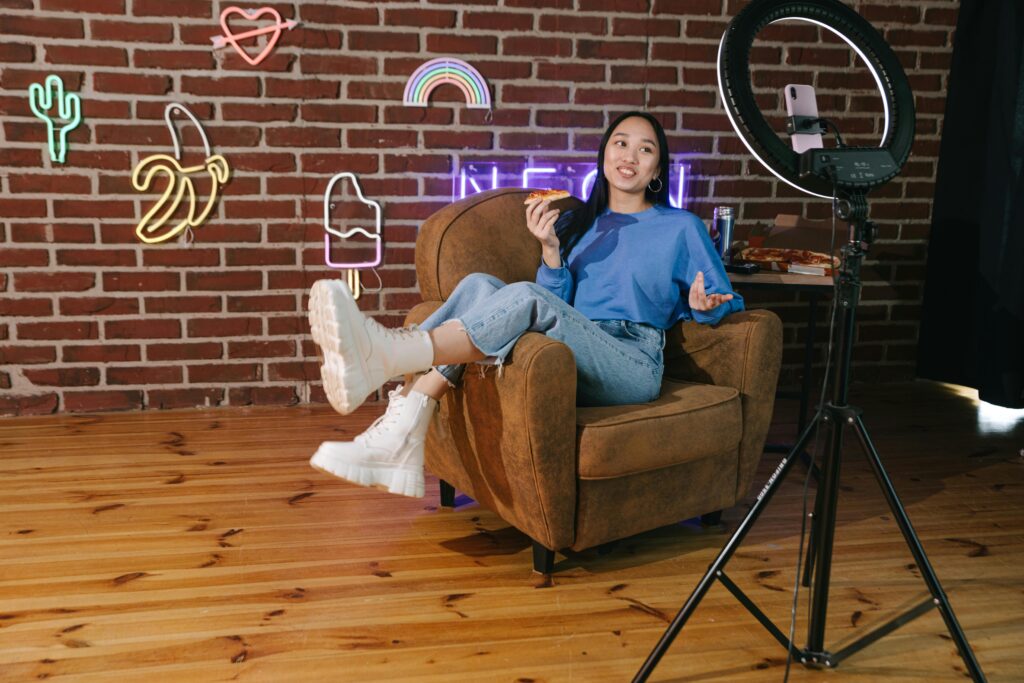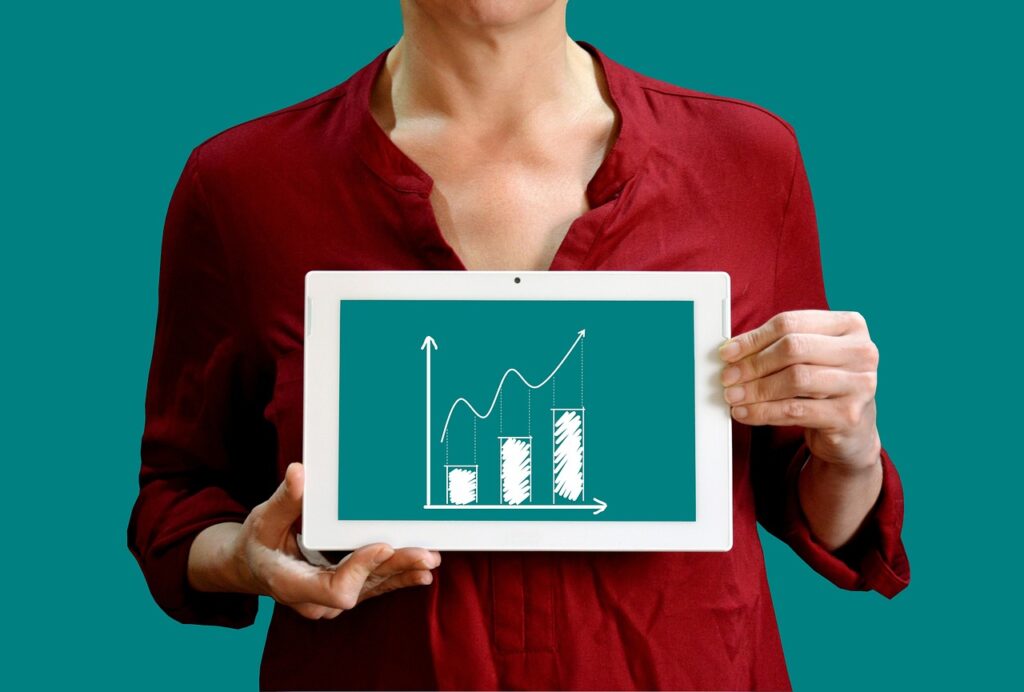Once an experimental tactic a decade ago, influencer marketing has now hit the mainstream – evolving into a pillar of major brands’ strategies in today’s landscape. The reason is clear: as digital influencers have soared in popularity, they foster sales. Audiences place far greater confidence in the creators they follow than in traditional ads, making influencer endorsements up to 10 times more impactful.
Thanks to this effectiveness, the digital influencer space reached a value of $13.8 billion in 2022, a 30% increase year-over-year. Digital personalities with sizable followings have become highly coveted assets, with more and more brands racing to strike deals with influential social media figures, hoping to capitalise on their loyal networks.
Defining Today’s Social Media Influencer
The broad influencer community shares two unifying attributes: enormous online audiences and the way to impact their followers’ purchasing choices. Leading influencers have amassed engaged social media followers. The figures vary between tens of thousands and millions. For brands, tapping into these hyper-engaged networks represents the holy grail of marketing.
But how does one actually become an influencer?
Influencers gain their power from followers perceiving them as authentic experts or tastemakers in particular niches like fashion, beauty, fitness, or lifestyle. Their content spotlights curated personal brands instead of overtly promoting third-party products – a subtle distinction that enables digital influencers to retain audience trust.
Unlike conventional celebrities, influencers portray accessible lifestyles and provide candid glimpses into their personal lives. These factors foster emotional connections between influencers and followers. Consequently, influencer marketing proves up to 10 times more effective than traditional celebrity endorsements dependent on glamour and ostentation. The intimate bonds influencers forge with their audiences account for their unrivalled marketing might.

Influencer tiers segment based on audience scale:
- Mega Influencers – over 1 million followers
- Macro Influencers – 100,000 to 1 million
- Micro-Influencers– 1,000 to 100,000
- Nano Influencers – under 1,000
Despite mega-influencers’ unrivalled reach, micro-partnerships often outperform for engagement. Micro-influencers are classified as ordinary creators who cultivate social media authority around niche specialties. Their laser focus enables tailored recommendations ideal for their community. Though less famous, micro-influencers leverage their intimacy and expertise to foster outsized involvement and relevance with followers. For authentic connections, niche Trump’s celebrity.
72.5% of consumers trust recommendations from micro-influencers over traditional ads.
This data spotlights micro-influencers’ strong ROI potential for brands on any budget. As costs scale with follower counts, smaller influencers provide affordable opportunities to tap into highly engaged niche communities.
However, mega-influencers remain alluring despite their hefty price tags. The majority have built a universal celebrity status transcending any one niche. Partnering with these elite few offers brands:
Increased Brand Awareness & Mainstream Credibility
Mega-influencers provide unparalleled access to huge, highly active networks. A single sponsored post guarantees millions of impressions in addition to valuable backlinks to a brand’s site and social media accounts. These metrics make mega-influencers ideal for raising brand awareness and positioning products as credible players in the mainstream market.
Viral Content & Global Reach Potential
A curated post from an A-list influencer can set the internet ablaze. Followers eagerly anticipate content featuring their favourite stars’ latest brand partnerships, while tabloids report on mega-influencers’ sponsorships as celebrity news. These ripple effects ensure enormous organic reach beyond an influencer’s followers. Top digital influencers tend to attract more international audiences as well—vital for brands targeting worldwide markets.
While mega-influencer partnerships pack an undeniable punch, they require significant budgets most brands cannot justify. Striking the right balance of micro-, macro-, and mega-influencer campaigns tailored to marketing objectives is essential. Multi-tiered strategies covering niche communities and mass audiences deliver the best results across metrics.
The Brands Betting Big on Digital Influencer Marketing
Several categories stand out for their widespread adoption and success with influencer marketing. These include:
Fashion & Beauty Brands
- Fashion and beauty sectors pioneered influencer marketing. Digital influencers have inherited the taste-making role magazines once held when editors and models were the stars.
- 92% of fashion brands have an ongoing influencer program, more than any other sector. Beauty brands follow closely at 82%.
- Top fashion and beauty influencers like Chiara Ferragni and Huda Kattan have launched successful product lines based entirely on their digital influence, disrupting traditional beauty conglomerates.
Retail Brands
- Retailers stand to generate large returns from influencer partnerships as consumers increasingly shop directly from social apps where influencers provide conversion-driving channels.
- 88% of retail brands report active influencer marketing partnerships.
- Research shows fashion influencer posts drive a $7.60 return for every $1 brand investment – cementing retail’s enthusiasm for digital creators.
Travel & Tourism Brands
- The travel industry heavily relies on visual inspiration and first-hand experiences to spark wanderlust. Influencers attract large, engaged audiences by selling desirable globe-trotting lifestyles.
- Travel brands strategically leverage influencers to promote destinations and products in an authentic, relatable style.
- Influencer marketing strategies gaining momentum across fashion, beauty, retail, and travel sectors provide valuable lessons for brands in any niche.
- In an oversaturated media landscape where traditional ads go ignored, establishing influencer connections offers a competitive advantage by reaching customers who know and trust those digital creators.
- Even new e-commerce companies can tap micro-influencers early on to generate community buzz, eventually expanding into larger partnerships as marketing budgets grow.

How Influencer Marketing Transforms Brand Strategies
Brands who’ve successfully adopted influencer marketing as an integrated component of their strategies have noted the following benefits:
Increased Brand Reach & Discovery
On average, influencer marketing initiatives expand brand reach by 70%. This heightened visibility is invaluable for raising brand awareness and attaining new audiences. Discovery via trusted digital influencers also helps brands appear more approachable to desired target demographics.
Boosted Content Engagement
UGC(user-generated content) drives engagement rates up to 4 times higher than brand-generated content. Influencer partnerships are the easiest way to inject authenticity into branded feeds flooded with sales pitches. When done right, influencer content boosts overall engagement metrics, providing valuable social proof of popularity.
Improved Rankings & SEO
Influencer partnerships lead to earned media, backlinks, and embedded mentions of brands across social media posts and videos. These signals all positively impact search engine rankings, which analyse the quality and quantity of external references as a credibility indicator.
Ultimately, this increased discoverability across both social and web searches drives more qualified website traffic. Even a single viral post can dramatically lift site visitor numbers and improve conversion rates.
Sales Lift
While tricky to quantify directly, influencer marketing undoubtedly lifts sales through increased brand visibility, website traffic, and consumer trust. Some estimate a $20 return on every $1 brand invests in digital influencer campaigns. Moreover, the click-through rates on influencer content outpace all other forms of digital marketing.

Cost Efficiency
Dollar for dollar, digital influencer marketing yields significantly higher returns compared to traditional advertisements. Despite seeming expensive upfront, conversion costs per follower reached are remarkably low. This efficiency, combined with higher-than-average engagement, makes influencers’ perceived value skyrocket.
Trend Forecasting
Influencers stay attuned to emerging trends before they permeate the mainstream. Their inside track on predicting the next waves allows brands to capitalise on arising opportunities ahead of the curve. They discover emerging brands, showcase new styles, and test innovative products. Tapping into this insider insight via influencer partnerships helps companies predict and capitalise on hot new trends within their industry.
Improved Brand Sentiment
60% of Gen Z purchased a product after seeing it promoted by an influencer. This enviable endorsement and subsequent word-of-mouth improve overall consumer perception regarding a brand. In today’s review-dominated era, sentiment holds heightened power to shift audiences. All signs point to influencer marketing continuing its steep growth climb in the coming years ahead. As platforms optimise features for shopping and influencer monetisation, budgets in this space will likely keep rising.
Major Marketing Agencies Build Up Influencer Divisions
Recognising the immense potential of leveraging digital influencers, marketing agencies are restructuring around influencer departments dedicated wholly to this unique form of branding. Top agencies are assembling specialist teams to handle scouting, relationship building, campaign management as well as data analysis focused on optimising future initiatives.
While early influencer marketing is highly unregulated, leading agencies aim to professionalise this alternative approach to brand building. Applying their legacy expertise around goal-setting, audience segmentation, and robust analytics stands to improve the reputation and ROI of influencer campaigns.
As demand rises for full-service influencer marketing solutions, agencies position themselves as invaluable partners for navigating this evolving space. In-house capabilities for harnessing the power of social media communities separate progressive agencies from outdated Mad Men-era holdouts. This gap will only widen moving forward.
What Brands Look for in a Digital Influencer Marketing Agency
Successful agency partnerships depend foremost on shared goals surrounding campaign objectives. Influencer marketing agencies in India should be adept at quantifying success metrics like engagement, conversions, lead generation, or overall ROI. Marketers should seek agencies skilled at measuring these key performance indicators. Core services most in demand currently include:
Digital Influencer Discovery & Recruitment
The most fundamental component of any influencer campaign is identifying and pitching the ideal digital influencers for your brand. Agencies build out proprietary processes for talent scouting and relationship building within their regions and verticals.
Campaign Management
Daily coordination across stakeholders and consensus is needed to align messy influencer campaigns. Experienced account managers at influencer marketing agencies save brands frustrating administrative work by taking the reins and communicating with influencers and internal teams.
Performance Monitoring
Cutting-edge agencies build custom reporting dashboards offering real-time visibility into campaign metrics focused on demonstrating definitive ROI. This brings accountability to influencer marketing, validating it as a scalable customer acquisition strategy.
Content Production
Turnkey creative direction, content production, and post-launch performance optimisation fall outside most brands’ wheelhouse. Agencies add major value, guiding influencers to create thumb-stopping branded content designed to go viral.
Competitive Intelligence
Dialled-in agencies analyse trends in influencer content and broader industry benchmarks. These insights contextualise campaign results while helping brands continually optimise their approach. Access to this data is invaluable for beating competitors.
As digital influencers amass more power through social media, marketing agencies must adapt to meet their demands and those of the brands paying to leverage these online tastemakers. A new era defined by the personalities popularised through Instagram, TikTok, and YouTube requires a nuanced human touch balancing maths-driven optimisation.
The Next Frontier: Artificial Influence

In recent years, artificially created CGI influencers have emerged, attracting major brand sponsorships as cost-efficient, highly customisable alternatives to human creators. These fictional personas highlight audiences’ hunger for aspirational, entertaining content regardless of the authenticity behind it.
While CGI influencers solve the unreliability issues of human creators for brands seeking more control over partnerships, audiences still heavily favour real-life influencers. However, as virtual metaverse platforms grow and processing power advances CGI realism, these AI influencers native to virtual worlds could flourish. If interactive technologies continue evolving CGI personas’ profitability and attractiveness, they may one day pose real competition to human digital stars.
Influencer Marketing Shapes the Next Generation of Brand Building
In an oversaturated digital landscape, consumers are drawn to recommendations from influencers with whom they’ve formed personal connections, rather than traditional ads. Savvy brands recognize these digital creators share more in common with devoted evangelists than transient spokespeople.
To effectively harness influencers in a marketing strategy requires acknowledging the intimate social bonds enabling their conversion power. Unique collaborations respecting creators’ autonomy while aligning with broader brand goals deliver the strongest partnerships.
Operationalising influencer marketing means going beyond transactions to establish loyal networks. Building genuine connections rooted in mutual growth potential transforms one-off endorsements into scalable marketing engines. Done right, influencer ties professionalise into profitable, sustainable brand intimacy that breaks through the noise. As attention becomes increasingly scarce, that personal touch spells the difference between irrelevant obscurity and household fame.
FAQs
Q: What are some key tips for brands starting with influencer marketing?
A: Start small with micro-influencers to test the waters more affordably, focus on niche communities aligned with your brand, prioritise engagement and authenticity over follower counts, and develop multi-tiered strategies encompassing different influencer tiers.
Q: How much do top influencers charge for branded content?
A: On average, micro-influencers charge $315 per post, macro-influencers charge $782 per post, and mega-influencers charge $1,642 per sponsored post.
Q: What data analytics should brands track to quantify influencer marketing success?
A: Track engagement rates on sponsored content, website traffic, conversions from influencer posts, click-through rates on links/promo codes, reach and impressions metrics, and ROI over time compared to other marketing channels.
Q: How can brands spot the next big influencers early?
A: Analyse micro-influencers with high engagement in your niche and identify standouts aligned to your brand. Cross-reference with trending searches, hashtags, and topics in your space to pinpoint rising stars. Move quickly to sponsor emerging influencers before the competition takes notice.
Q: What legal considerations exist around influencer marketing?
A: Ensure proper disclosures of sponsored content, follow FTC endorsement guidelines, implement influencer contracts covering usage rights and expectations, secure model releases for unique branded content, and protect confidential information.
Q: Why do some influencer marketing campaigns still need help?
A: Lack of authenticity and strategy alignment damages campaigns. Brands must give influencers creative licence while guiding overall messaging. Forcing over promotional content and excessive branding erodes the relatability underpinning quality influencer marketing. Prioritise trust and conversions over hard sells.



